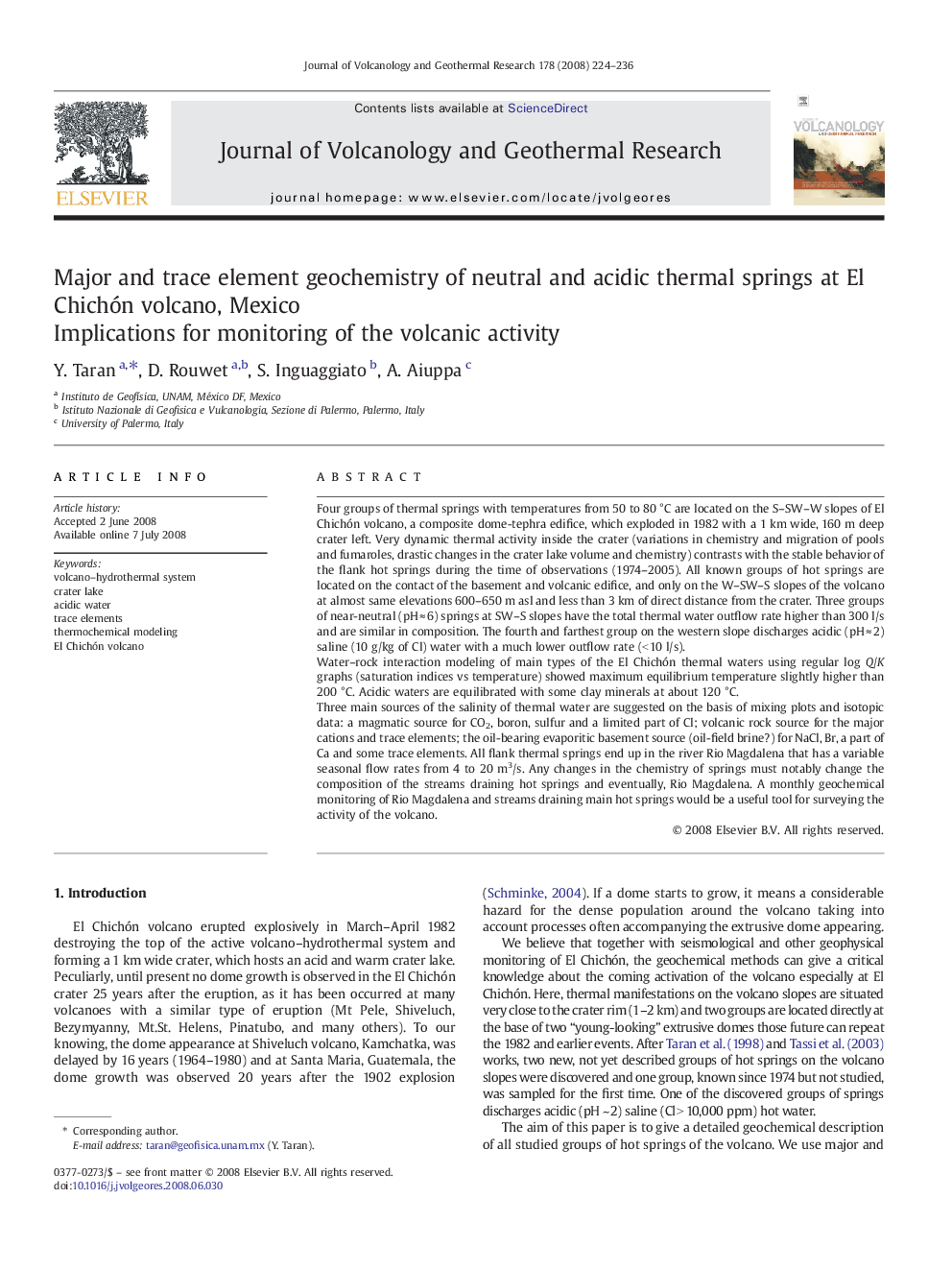| کد مقاله | کد نشریه | سال انتشار | مقاله انگلیسی | نسخه تمام متن |
|---|---|---|---|---|
| 4714425 | 1353964 | 2008 | 13 صفحه PDF | دانلود رایگان |

Four groups of thermal springs with temperatures from 50 to 80 °C are located on the S–SW–W slopes of El Chichón volcano, a composite dome-tephra edifice, which exploded in 1982 with a 1 km wide, 160 m deep crater left. Very dynamic thermal activity inside the crater (variations in chemistry and migration of pools and fumaroles, drastic changes in the crater lake volume and chemistry) contrasts with the stable behavior of the flank hot springs during the time of observations (1974–2005). All known groups of hot springs are located on the contact of the basement and volcanic edifice, and only on the W–SW–S slopes of the volcano at almost same elevations 600–650 m asl and less than 3 km of direct distance from the crater. Three groups of near-neutral (pH ≈ 6) springs at SW–S slopes have the total thermal water outflow rate higher than 300 l/s and are similar in composition. The fourth and farthest group on the western slope discharges acidic (pH ≈ 2) saline (10 g/kg of Cl) water with a much lower outflow rate (< 10 l/s).Water–rock interaction modeling of main types of the El Chichón thermal waters using regular log Q/K graphs (saturation indices vs temperature) showed maximum equilibrium temperature slightly higher than 200 °C. Acidic waters are equilibrated with some clay minerals at about 120 °C.Three main sources of the salinity of thermal water are suggested on the basis of mixing plots and isotopic data: a magmatic source for CO2, boron, sulfur and a limited part of Cl; volcanic rock source for the major cations and trace elements; the oil-bearing evaporitic basement source (oil-field brine?) for NaCl, Br, a part of Ca and some trace elements. All flank thermal springs end up in the river Rio Magdalena that has a variable seasonal flow rates from 4 to 20 m3/s. Any changes in the chemistry of springs must notably change the composition of the streams draining hot springs and eventually, Rio Magdalena. A monthly geochemical monitoring of Rio Magdalena and streams draining main hot springs would be a useful tool for surveying the activity of the volcano.
Journal: Journal of Volcanology and Geothermal Research - Volume 178, Issue 2, 10 December 2008, Pages 224–236